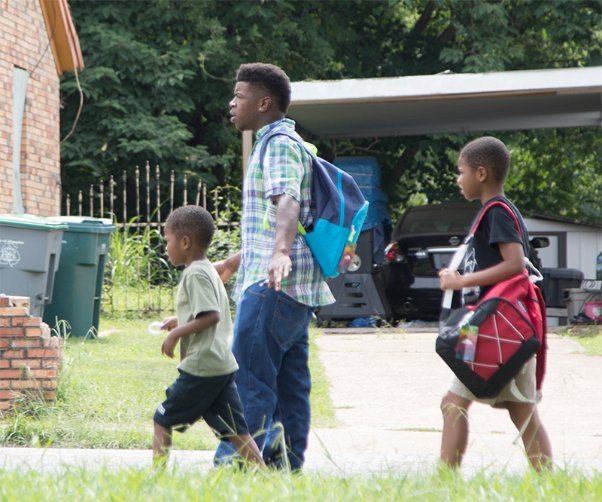
How COVID-19 has further amplified health disparities and socioeconomic barriers in our community
What does the term “health disparities” mean, and how does it connect to social determinants of health?
A health disparity refers to a higher burden of illness, injury, disability, or mortality experienced by one group relative to another.
Social determinants of health are factors that are linked to a lack of opportunity and a lack of resources to protect, nurture, and maintain good health, and in combination, are mostly responsible for health disparities — avoidable differences in health status seen within and between populations.
While these disparities are not new, their effects on the health and well-being of African Americans and other people of color have been highlighted by the COVID-19 pandemic.
What type of health disparities do we see in our own community between African Americans and whites?
One in three adults in Shelby County has diabetes, and diabetes is the 7th leading cause of death in the county. A recent study shows that 67% of people who died in Shelby County from diabetes were African American.
In Shelby County, African American residents are three times more likely to die from HIV/AIDS, nearly three times more likely to die from diabetes and have twice the infant mortality rate of their White counterparts.
African Americans also die from heart disease, stroke and respiratory diseases at a much higher rate than Whites do.
More from Your Health:
What it means to be ‘high risk’ for COVID-19 — and why you shouldn’t delay treatment
As noted, the COVID-19 pandemic has further amplified health disparities in our community.
As of the end of June, African Americans accounted for roughly 72% of all admitted COVID-19 patients in the Methodist Le Bonheur Healthcare system, even though they make up less than 49% of the population in our four-county service area.
Meanwhile, white Mid-Southerners account for roughly 16% of COVID-19 admissions, while making up 43% of the service area population.
For comparison, we are also seeing an uptick in the COVID positivity rate and hospitalizations for people in our Hispanic communities.
The conditions that make people vulnerable to COVID-19 are the conditions that often disproportionately impact low-income people and people of color. These trends are reflected in Memphis where more disadvantaged communities have worse health outcomes and are subject to many barriers to good health.
These needs are pronounced in North and South Memphis, where MLH has maintained a hospital presence, providing important access to care that would otherwise be unavailable.
What can be done to reduce health disparities for the Black community?
Increasingly, healthcare institutions are becoming aware of the connection between the socioeconomic condition of poverty and the impact on health. Methodist Healthcare is recognizing its potential to serve as a point of contact for lower income families to assist them with support services for transportation to and from medical appointments and for connection to assistance with food and energy bills.
By adopting methods to identify poverty-related social determinants of health and providing or connecting families to interventions to address these issues, we can help mitigate the negative effects of poverty and better support families to achieve better health.
SUBSCRIBE TO OUR BLOG
and you'll receive more health & wellness tips right in your inbox.
SUBSCRIBE NOWWhat neighborhoods in our community don’t have adequate access to health services?
Access to health service is affected by many factors -— not only the physical locations of clinics and hospitals. Issues like limited or no transportation, lack of financial resources, lack of knowledge about good health practices and health resources and a person’s trust in the health system also affect a person’s ability to access health services.
In Shelby County, nearly 26% of our overall population and 44% of our children live in poverty. The impoverished neighborhoods in our community are most affected by issues related to inadequate access to health services. We are fortunate that Methodist Healthcare is in all four corners of the Memphis area.
What is being done right now to improve access to healthcare in our community?
In addition to work within our clinics and hospitals to decrease barriers to access health services, our Community Outreach division provides local identification and intervention efforts in low-income areas of our community — in childcare facilities, schools, community centers, and homes. We provide childhood screenings, develop partnerships to maintain community intervention resources, and operate dozens of community-based initiatives such as a medical-legal partnership, home visitation programs for new mothers, school nurses, and chronic disease management to address health disparities caused by poverty.
After working to improve health equity for a number of years, MLH leadership determined that a more focused effort was needed to make a greater impact, so the organization recently created a senior leadership position dedicated to reducing health disparities in our community.
MLH has long sought to address the factors that contribute to health disparities in our community. The current COVID-19 pandemic has put a spotlight on the need to reduce those disparities.
It’s important to remember that the health system cannot fix these issues alone. They will require a collaborative effort with other healthcare providers, the corporate community, social service agencies, the faith community, educators and elected officials united to support at-risk communities tackling these challenges.
Visit MethodistHealth.org to learn more about our Community Outreach Services .
Want to learn more about our Community Outreach Services?
We believe we have a responsibility to partner with our community to promote and protect their own health and well-being.
Related Articles


